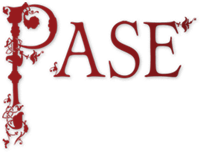Table of Contents
Top of page
Name
Summary
Distribution Map
Property List
Profile
Bibliography
Bottom of page
Leofgyth 4
Leofgyth ‘of Knook’ (Wiltshire), fl. 1066x1086
Female
DWP
4 of 5
Summary
Leofgyth 4 held an estate in west Wiltshire assessed at 3½ hides in 1086, when it was worth £3 and she was regarded as a ‘king’s thegn’, probably because she made orphreys for the king. Leofgyth’s husband held the estate TRE.Distribution map of property and lordships associated with this name in DB
List of property and lordships associated with this name in DB
Tenant-in-Chief 1086 demesne estates (no subtenants)
| Shire | Phil. ref. | Vill | DB Spelling | Holder 1066 | Lord 1066 | Tenant-in-Chief 1086 | 1086 Subtenant | Fiscal Value | 1066 Value | 1086 Value | Conf. | Show on Map |
|---|---|---|---|---|---|---|---|---|---|---|---|---|
| Wiltshire | 67,86 | Knook | Leviet | unnamed husband of Leofgyth | - | Leofgyth, king's thegn | - | 3.50 | 3.00 | 3.00 | B | Map |
| Totals | ||||||||||||
Profile
Leofgyth 4 is identified because DB describes her as a woman and no other 1086 estate is certainly attributed to a woman with the uncommon name Leofgyth. In addition, her estate lay far from the only one held TRE by someone of that name, while her gender, occupation and post-Conquest survival mean that she cannot be confused with any of the men called Leofgeat or women called Leofgifu in DB. There is no reason to consider Leofgyth 4 is connection with anyone else.Leofgyth 4’s husband held one of the two TRE estates at Knook, an area extending from the Vale of Wylye up unto Salisbury Plain in west Wiltshire and dotted with old tumuli and long-barrows, from one of which the estate probably took its name (Gover et al. 1939: 171). By 1086 Leofgyth, presumably now a widow, held the estate in her own right and the details were entered in DB among the lands of the king’s thegns. Her husband is not named in DB and has not been identified, so it is not known if he had held other estates TRE.
The DB entry concludes with the note that Leofgyth ‘made and makes the orphrey of the king and queen’ (fecit 7 facit aurifrisium regis 7 reginæ). This use of the present and past tenses presumably refers to King William 1 and his queen, Matilda 2, who died in 1083; but it could imply that Leofgyth had also provided orphreys for King Edward 15 and Queen Eadgyth 3 before the Conquest. Both the Phillimore and Alecto translations of DB render aurifrisium as ‘gold fringe’; but the sense of the Latin could include ‘gold embroidery’ or ‘gold braid’ and either of these would be more in keeping with what is known of Anglo-Saxon textile production and decoration (Latham 1965: 38, 202; Owen-Crocker 2004: 285-6, 308-12).
Lavelle (2004) has observed that the king’s thegns of the Wessex heartlands as recorded in DB display many similarities to later medieval serjeanties. It is therefore possible that Leofgyth and her husband held their land in recognition of the royal service that she or they provided both before and after the Conquest. If so, then DB’s note that Leofgyth ‘made and makes’ the royal orphreys could be a record of the terms of that tenure.
In 1086 Leofgyth’s estate appears to have been predominantly arable, with two-and-a-half ploughs (the ‘half’ presumably being one drawn by four rather than eight oxen) and a mill to grind the grain. However, there were also 5 acres of meadow together with an area of pasture elsewhere on the estate, although whether this provided for more than just the oxen for the plough-teams is unknown. Also on the estate were four villans and four bordars with their households, who together with Leofgyth’s single slave provided the estate’s workforce.
Bibliography
Gover et al. 1939: J. E. B. Gover, A. Mawer and F. M. Stenton, The Place-Names of Wiltshire, English Place-Name Society 16 (Cambridge, 1939)
Latham 1965: R. E. Latham, Revised Medieval Latin Word-List from British and Irish Sources (London, 1965)
Lavelle 2004: R. Lavelle, ‘All the king’s men? Land and royal service in eleventh-century Wessex’, Southern History 26 (2004), 1-37
Owen-Crocker 2004: G. R. Owen-Crocker, Dress in Anglo-Saxon England (1986; revised and enlarged edition Woodbridge, 2004)
